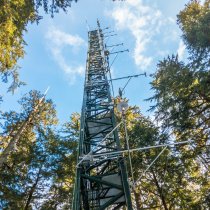Next Steps - Maximizing the Potential of NEON: A Message from Gene Kelly
May 8, 2019
Hello again. Over the last few months I have been back at NEON working/consulting with Battelle and the staff here in Boulder, Colorado as the observatory moves into full operations. So I am once again back on the “Inside Looking Out” (for you more senior ecologists a song made famous by the Animals). The program is certainly evolving and as expected this transition into full operations has created challenges and opportunities both external and internal to NEON.
Now that we are in operations mode, the challenge for the program is to ensure that the most critical scientific questions will be addressed by NEON, maximizing the potential for NEON to achieve its mission of advancing grand challenge research. The opportunity to actively engage the broader scientific community will have benefits for NSF, NEON, and the ecological research community. We fully understand that such engagement will strengthen support for and commitment to NEON among researchers today and for the next generation of researchers, by providing ecologists with opportunities for greater involvement in this powerful research platform. NEON, in turn, will achieve higher quality science as a result of renewed intellectual input from scientists, increased flexibility in its operations, and continued strength in its networked instrumentation platform.
May has arrived, and with it, Spring – at least, at many of our sites and the challenges our field scientists face are myriad, including logistical and travel hurdles, dangerous weather and animals, impenetrable forests, and thorny local politics. Indeed, these are exciting times for our program. In addition to ramping up our seasonal field sampling, NEON scientists have recently organized and hosted a couple of very cool workshops that were led by Alycia Crall and Mike SanClements. Also noteworthy is the fact that several of our aquatic scientists are about to present some of our program work at a national conference this month. These are all recent examples of our team engaging with the research community. In addition, Kathy Kirby led the Construction Closeout Review for NEON Construction at NSF on April 22, and we are looking forward to a successful outcome from that two-day event with the Review Panel.
Cheers, Gene
Acting Chief Scientist

